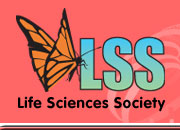Robert F. Murphy
Abstract
AUTOMATED PROTEOME-WIDE DETERMINATION AND MODELING OF SUBCELLULAR LOCATION FOR SYSTEMS BIOLOGY
An important challenge in the post-genomic era is to identify subcellular location on a
proteome-wide basis. A major source of information for this task will be imaging of tagged
proteins in living cells using fluorescence microscopy. We have previously developed
automated systems to interpret the images resulting from such experiments and demonstrated
that they can perform as well or better than visual inspection. Our recent work demonstrates
that these methods can be applied to large collections of images from yeast (the UCSF yeast
GFP localization database), human tissues (the Human Protein Atlas), and randomly
GFP-tagged mouse 3T3 cell lines. A distinct but related task is learning from images what
location patterns exist (rather than classifying them into pre-specified patterns). In this
regard, we have obtained reasonable results on clustering mouse proteins into subcellular
location families that share a statistically indistinguishable pattern. In order to be able to
capture and communicate the pattern in each family, we have developed approaches to
learning generative models of subcellular patterns from images. These can be used to
synthesize images that in a statistical sense are drawn from the same underlying population as
the images used for training. The models can be communicated in compact XML files that
are compatible with cell model descriptions captured in SBML. We anticipate combining
these models to construct cell models containing all expressed proteins in their proper
locations. We are currently working to integrate our tools with existing cell modelling
systems such as the Vitual Cell to permit accurate, well-structured information on subcellular
location to be incorporated into systems biology efforts.
Biography
Robert F. Murphy is the Ray and Stephanie Lane Professor of Computational Biology and director of the Ray and Stephanie Lane Center for Computational Biology at Carnegie Mellon University. He also is Professor of Biological Sciences, Biomedical Engineering, and Machine Learning, and Director (with Jelena Kovacevic) of the Center for Biomedical Image Informatics at Carnegie Mellon. He also directs (with Ivet Bahar) the joint CMU-Pitt Ph.D. Program in Computational Biology. From 2005- 2007, he served as the first full-term chair of NIH’s Biodata Management and Analysis Study Section. He was named a Fellow of the American Institute for Medical and Biological Engineering in 2006, and he received an Alexander von Humboldt Foundation Research Award in 2008. Dr. Murphy has received research grants from the National Institutes of Health, the National Science Foundation, the American Cancer Society, the American Heart Association, the Arthritis Foundation, and the Rockefeller Brothers Fund. He has co-edited two books and two special journal issues on “Cell and Molecular Imaging,” and published over 150 research papers. He is President of the International Society for the Advancement of Cytometry. Dr. Murphy’s career has centered on combining fluorescence-based cell measurement methods with quantitative and computational methods. His group at Carnegie Mellon pioneered the application of machine learning methods to high-resolution fluorescence microscope images depicting subcellular location patterns in the mid 1990’s. This work led to the development of the first systems for automatically recognizing all major organelle patterns in 2D and 3D images. He currently leads NIH- funded projects for proteome-wide determination of subcellular location in 3T3 cells (with Peter Berget and Jonathan Jarvik) and continued development of the SLIF system for automated extraction of information from text and images in online journal articles (with William Cohen and Eric Xing). His group is also responsible for providing image informatics tools for the NIH-funded Technology Center for Networks and Pathways (headquartered at Carnegie Mellon) and for providing structured, image- based information on subcellular location for the National Center for Integrative Biomedical Informatics (headquartered at the University of Michigan).


